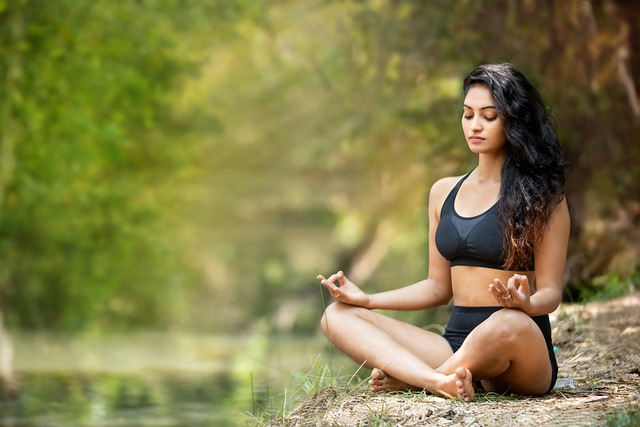When the day ends and the lights dim, many of us seek a moment of quiet to unwind. A routine that blends gentle movement, mindful breathing, and strength building can transform that moment into a sanctuary of nyugodtság, the Hungarian word for calmness or serenity. Daily yoga, practiced with intention, offers a pathway not only to physical flexibility but also to a resilient mind. By dedicating a few minutes each evening to a sequence of poses, you can create a ritual that nurtures body, breath, and spirit simultaneously.
Why Yoga Fosters Nyugodtság
Yoga is a holistic practice that unites body and mind. When you move through postures, you increase circulation, relieve muscle tension, and improve joint mobility. At the same time, focused breathing and present‑moment awareness calm the nervous system. Research shows that regular practice reduces cortisol levels and enhances parasympathetic activity, which is the body’s natural rest‑and‑digest response. This physiological shift is what allows the mind to settle into nyugodtság, even after a hectic day.
- Enhanced flexibility and balance
- Improved core stability and posture
- Lowered heart rate and blood pressure
- Greater emotional regulation and resilience
Choosing the Right Time and Space
To cultivate genuine nyugodtság, choose a quiet corner of your home where you can lay down a mat and stay undisturbed for 10–20 minutes. The time of day is flexible; some people find evening practice most relaxing, while others prefer a sunrise stretch. The key is consistency—make it a non‑negotiable part of your schedule, just like brushing your teeth.
“The practice of yoga is not about touching your toes; it’s about what you learn on the way down.” – Jigar Gor
A Sample Evening Routine for Nyugodtság
Below is a balanced sequence that blends warm‑up, strength, flexibility, and a closing meditation. Adjust the duration of each pose to match your fitness level and how much time you have. Remember, the goal is to ease into each posture, breathing deeply and listening to your body.
-
Mountain Pose (Tadasana)
Stand tall, feet together, shoulders relaxed. Inhale, raise the arms overhead, exhale, gently release. Hold for 5 breaths to establish grounding and alignment. -
Sun Salutation A (Surya Namaskar A)
Perform 3–5 rounds to warm the spine, hips, and shoulders. Focus on synchronizing breath with movement; inhale on the upward motion, exhale on the downward motion. -
Warrior II (Virabhadrasana II)
Step one foot back, bend the front knee, extend the arms. Hold for 4–6 breaths on each side. This pose builds strength in the lower body and encourages a steady, focused mind. -
Tree Pose (Vrikshasana)
Balance on one leg, placing the opposite foot on the inner thigh or calf (avoid the knee). Bring hands to prayer position or raise overhead. This posture enhances balance and encourages a calm mental focus. -
Seated Forward Fold (Paschimottanasana)
Sit with legs extended, inhale arms overhead, exhale slowly folding forward. Stretch the hamstrings, lower back, and calves. Let the breath carry you deeper into the stretch. -
Bridge Pose (Setu Bandha Sarvangasana)
Lie on your back, feet hip‑wide apart, knees bent. Press into the feet and lift the hips, clasping the hands beneath the pelvis if comfortable. This pose opens the chest and promotes heart relaxation. -
Savasana (Corpse Pose)
Release all tension, let your feet fall naturally, and bring your hands to your sides. Stay here for 5–10 minutes, breathing naturally, allowing the body to absorb the benefits of the practice.
After the final Savasana, sit up slowly, take a moment to acknowledge how you feel, and set an intention for the rest of your evening. This mindful closing helps cement nyugodtság into your daily life.
Incorporating Breathwork for Extra Calm
Throughout the routine, integrate controlled breathing techniques such as diaphragmatic breathing or the 4–7–8 method. These practices enhance oxygen delivery, reduce anxiety, and amplify the sense of nyugodtság. A simple practice to try after your final pose:
- Inhale through the nose for a count of 4.
- Hold the breath for a count of 7.
- Exhale slowly through the mouth for a count of 8.
- Repeat 3–5 times.
Notice how the rhythmic breath steadies your heart and brings your attention to the present moment.
Supporting Nutrition and Lifestyle for Optimal Results
Yoga’s benefits are amplified when paired with a balanced diet and healthy lifestyle choices. Hydrate before and after practice, choose whole foods, and limit processed sugars. Adequate sleep—around 7–9 hours per night—further supports muscle recovery and emotional regulation.
- Start the day with a glass of water and a light snack such as fruit or nuts.
- Consume protein, healthy fats, and complex carbohydrates to fuel workouts.
- Incorporate anti‑inflammatory foods—berries, leafy greens, turmeric—to reduce muscle soreness.
- Practice mindful eating: chew slowly, savor flavors, and listen to hunger cues.
When body, breath, and mind are nourished, the practice of daily yoga becomes a profound source of nyugodtság, carrying its calm into every aspect of life.
Monitoring Progress and Adjusting the Routine
Keep a simple journal to note how you feel before and after each session. Track metrics like breath depth, flexibility range, and emotional state. Over weeks, you’ll notice subtle shifts—greater ease in daily tasks, lower stress levels, improved sleep quality. Adjust the routine by adding more strength poses if you feel weak, or incorporating deeper stretches if flexibility is limited. The key is to listen and adapt, honoring what your body needs at each stage.
Final Thoughts: The Journey to Nyugodtság
Daily yoga is more than a workout; it’s a deliberate practice that invites nyugodtság into your day. By cultivating a routine that balances movement, breath, and stillness, you create a safe harbor against the noise of modern life. Even on the busiest days, the few minutes you invest in your body and mind will ripple outward, improving focus, resilience, and overall health.
Embrace the practice with curiosity, patience, and self‑compassion. Over time, you’ll find that nyugodtság is not a destination but a continuous, gentle state you can access whenever you need it.



